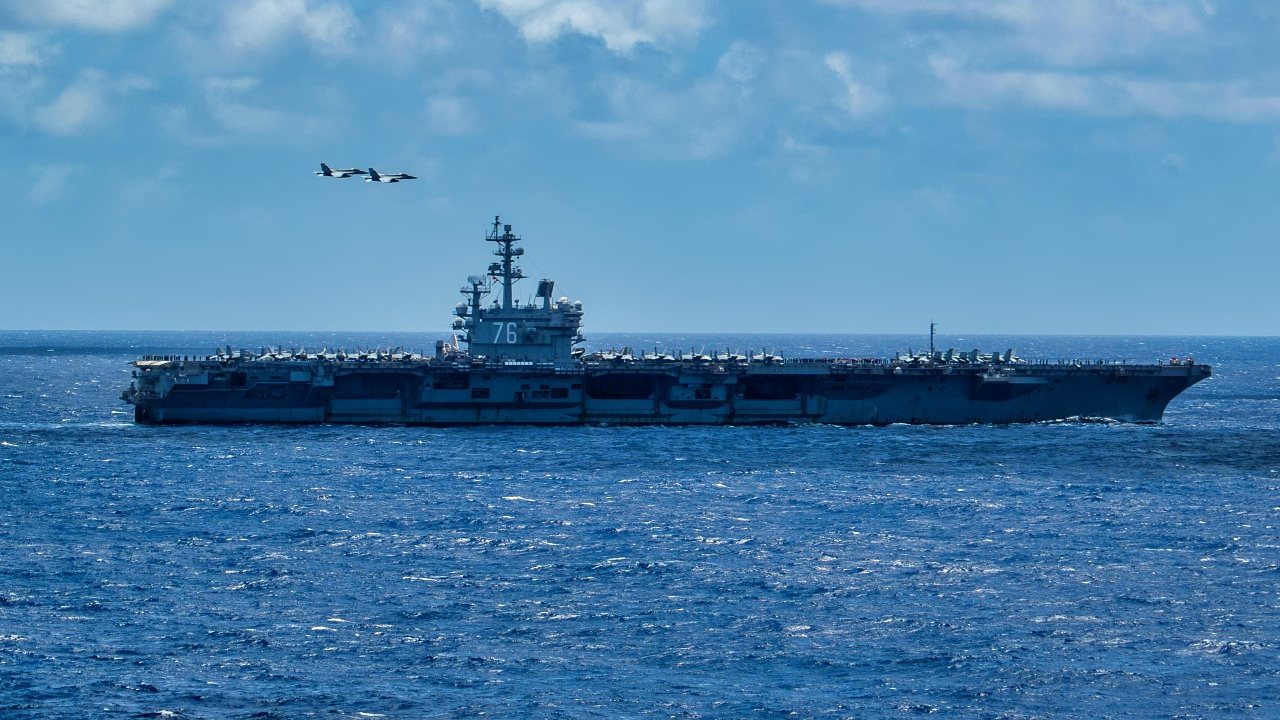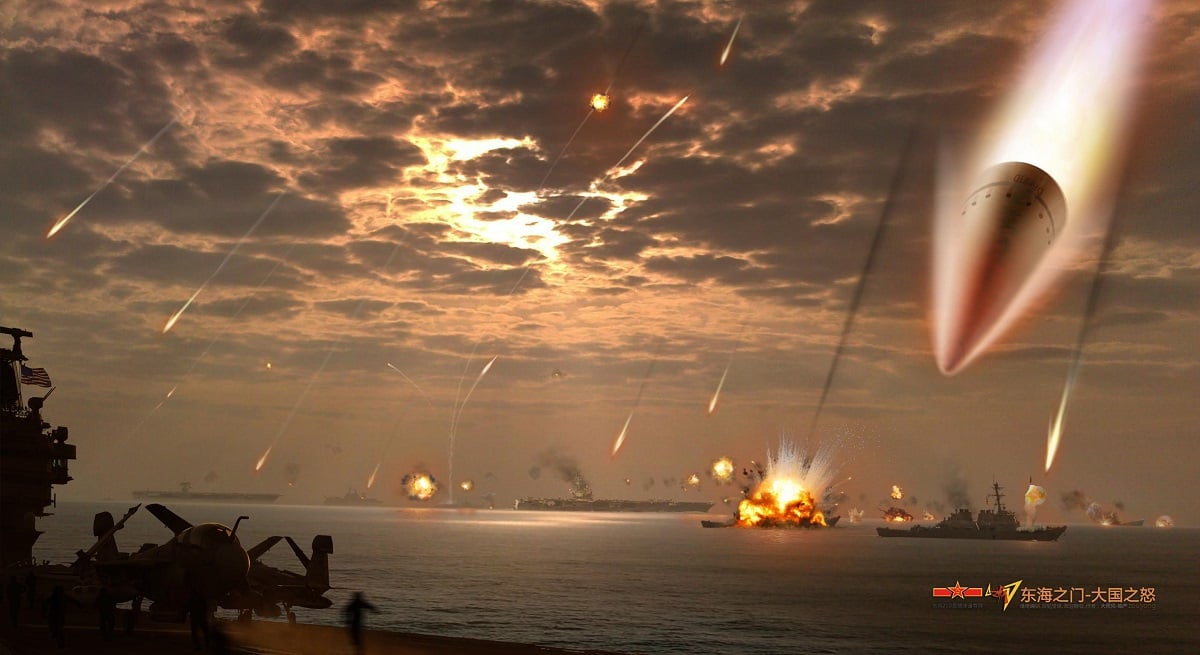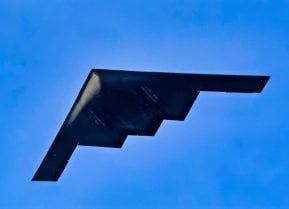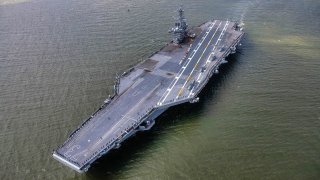Navy Aircraft Carriers vs. Carrier Killer Missiles: Who Wins in a War?
U.S. aircraft carriers face growing threats from China’s anti-ship ballistic missiles, like the DF-21D and DF-26B, designed to target and potentially sink these massive vessels.
Summary and Key Points: U.S. aircraft carriers face growing threats from China’s anti-ship ballistic missiles, like the DF-21D and DF-26B, designed to target and potentially sink these massive vessels.

-As carriers have been pivotal in U.S. military strategy, losing one would be catastrophic and could reshape naval warfare. The question now is whether these supercarriers are still viable in modern conflicts, especially against a near-peer adversary like China.
-While carriers remain central to U.S. power projection, their vulnerability to advanced missile systems could prompt a reassessment of their role in future warfare.
Is the Age of the Aircraft Carrier Coming to an End?
Military planning is about considering the numerous hypothetical scenarios – such as how and where an enemy might strike, but more importantly whether and even how a potential foe's weapons systems can be countered. No doubt America's enemies likely have considered how to hit and sink an aircraft carrier – and it is just as likely U.S. Navy officials have been kept up at night worrying about such an unthinkable event.
The sailors of the United States Navy must do everything right absolutely every time, while an enemy only has to get lucky once. That fact is no doubt understood by the sailors who have been serving in the Red Sea, facing missile and drone strikes launched by Houthi rebels operating in Yemen.
So far the United States Navy has a perfect record, countering every missile fired at its warships. Arguably the odds are stacked in favor of the U.S. military, which has the best and most advanced air defense systems in the world operated by highly trained sailors.
In a conflict against China, however, the odds could shift.
As previously reported, three decades ago, China introduced its DF-21D (Dong Feng-21, CSS-5), a medium-range, road-mobile ballistic missile. It has been described as the world's first anti-ship ballistic missile (ASBM) or "carrier killer." Designed to replace the obsolete Dong Feng-2 (CSS-1), it was China's first solid-fuel road-mobile missile to use solid propellant. Able to deploy a 600 kg payload with a minimum range of 500 km (311 miles) and a maximum range of 2,150 km, the DF-21D’s warhead is likely maneuverable and may have an accuracy of 20 m CEP (circular error probable).
Beijing has since developed multiple DF-21 variants, including a dual nuclear/conventional capable version (DF-21C) and another designed as an anti-ship ballistic missile (DF-21D). In 2016, the U.S. Department of Defense (DoD) also revealed that it believed a new nuclear variant, the DF-21E CSS-5 Mod 6) was also being produced.
Moreover, while the DF-21D could be used near the "home waters" of China, Beijing has also developed another missile that poses a threat to warships operating throughout much of the Indo-Pacific region.

This is the DF-26B (Dong Feng-26), a road-mobile, two-stage solid-fueled intermediate-range ballistic missile that was first unveiled during a military parade in September 2015. It has a reported range of 4,000km (2,485 miles) and it can be used in both conventional and nuclear strikes against ground as well as naval targets.
The mobile launcher can carry a 1,200 to 1,800 kg nuclear or conventional warhead, and as it could directly strike a target such as the U.S. territory of Guam in the event of war it should be seen as a formidable weapon. More ominously, the DF-26B has been described as a carrier killer due to how it could be used to target the U.S. Navy’s fleet of Nimitz- and Gerald R. Ford-class nuclear-powered supercarriers.
Aircraft Carrier Vs. The Carrier Killer
Aircraft carriers were vital during the Second World War in defeating Japan in the Pacific, and the flattops have proven vital in confronting aggression during the Cold War and throughout the Global War on Terror (GWoT). Yet, the number of carriers has actually diminished even as the United States Navy operates 11 nuclear-powered aircraft carriers – more than any other nation in the world.
Instead of having a large fleet of conventionally powered carriers, the United States relies on a smaller number of massive flattops. The question now is whether the United States Navy could risk such vessels in a conflict against a near-peer adversary, notably China.
Losing a single carrier would be devastating as it couldn't be quickly replaced.
Yet, a war against China wouldn't simply be a replay of World War II. Even if the conflict were to be fought in the Indo-Pacific, it wouldn't be an island-hopping campaign. More importantly, U.S. bombers can already strike any spot on the globe thanks to aerial refueling fly CONUS-to-CONUS missions.
Thus, the hypothetical is whether carriers are now the weapons needed for a war against China. It is unlikely that such a conflict would be decided by even a single decisive naval battle. Rather it would likely be one of stealth bombers, missiles and possibly even nuclear weapons should the conflict escalate to that point.

Yet, the point remains that if an enemy has enough missiles, drones, aircraft, submarines, etc. – a carrier is going to be sunk. But that goes both ways. China can ill afford to lose its capital ships any more than the U.S.
Perhaps that realization is enough that cooler heads will prevail again, and keep any potential Cold War 2.0 from turning hot.
Author Experience and Expertise: Peter Suciu
Peter Suciu is a Michigan-based writer. He has contributed to more than four dozen magazines, newspapers, and websites with over 3,200 published pieces over a twenty-year career in journalism. He regularly writes about military hardware, firearms history, cybersecurity, politics, and international affairs. Peter is also a Contributing Writer for Forbes and Clearance Jobs. You can follow him on Twitter: @PeterSuciu. You can email the author: [email protected].
Image Credit: U.S. Navy Flickr and Creative Commons.


